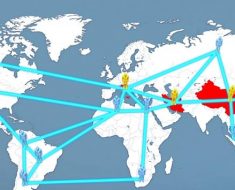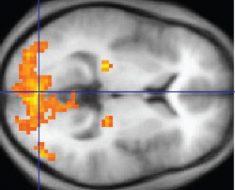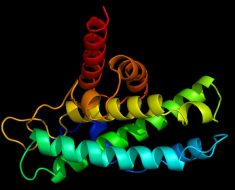
The recently introduced thulium fiber laser (TFL) does not improve the clinical outcomes of laser treatment for urinary stones compared to the standard for laser stone therapy, reports a randomized trial in the Journal of Urology.
Despite its theoretical technical advances, the new study shows TFL has no significant clinical advantage over a modern high-power pulse modulated holmium-yttrium aluminum garnet (Ho:YAG) laser in ureteroscopic lithotripsy of stones. “Our findings suggest that either of these currently available laser systems can provide excellent clinical outcomes treating non-staghorn renal and ureteral calculi in skilled hands,” comments lead author Christopher R. Haas, MD, of University of Wisconsin.
First clinical comparison of TFL and Ho:YAG lasers
Approved by the US Food and Drug Administration in 2019, the TFL is a relatively new alternative to Ho:YAG energy for laser lithotripsy of urinary stones. Introduced in the 1990s with technical refinements over the years, the Ho:YAG laser has been the gold standard of care for laser lithotripsy. In this minimally invasive procedure, laser energy is delivered through a fiber passed through a ureteroscope directly to the visualized stone to break up or “dust” stones into pieces small enough to pass down the ureter.
The TFL has lower voltage requirements, a theoretically faster ablation speed, and a wider range of frequency and energy settings that permit ultra-fine dusting settings compared to high-power Ho:YAG units. However, there is limited high-quality evidence to show that the TFL offers better clinical outcomes compared to modern high-power pulse modulated Ho:YAG systems.
The randomized controlled trial included 108 patients with urinary stones smaller than two centimeters located in the kidney and/or ureter undergoing outpatient surgery with ureteroscopy and laser lithotripsy. Patients were randomly assigned to treatment with the TFL or a current-generation high-power pulse modulated Ho:YAG laser. Fifty-six patients received TFL treatment and 52 received Ho:YAG laser treatment. Patient and stone characteristics were similar between groups. The laser performance and clinical outcomes of operative time, complications, and stone free rate were compared.
Comparable results on key kidney stone treatment outcomes
The results showed that the two lasers required similar time to break up stones into passable fragments of one millimeter or less: an average of 19.9 minutes with the TFL and 21.4 minutes with the Ho:YAG laser. Both lasers also performed similarly on stones of different sizes, densities, and in different locations.
Other important clinical outcomes were similar as well, including stone-free rate and any post-operative complication within 60 days. The Ho:YAG laser used less total energy and had improved efficiency, suggesting that the TFL requires more energy to produce comparable outcomes—although the clinical significance of this finding is unclear.
The two lasers also produced similar improvement on a standard measure of stone-related symptoms and quality of life (the Wisconsin Stone Quality of Life questionnaire [WISQOL]). On a zero-to-100 scale, average improvement was about 35 points for the TFL and 24 points for the Ho:YAG laser. In subjective assessments, surgeons rated the TFL as being more efficient overall and having less retropulsion (pushing stones backwards). A more stably positioned stone during lithotripsy (less retropulsion) may aid in making lithotripsy quicker and more successful.
Dr. Haas and colleagues note their findings differ from a previous study, which reported improved outcomes with the TFL. However, that study used an older non pulse-modulated Ho:YAG laser with lower power settings. The authors note that the optimal power settings for lithotripsy using the TFL have yet to be established.
“This randomized clinical trial suggests no significant clinical advantage of one laser technology over the other,” Dr. Haas and coauthors conclude. “As both technologies are safe and highly effective, surgeon and institutional preference is the best approach when selecting one or the other.”
More information:
Christopher R. Haas et al, Pulse-modulated Holmium:YAG Laser vs the Thulium Fiber Laser for Renal and Ureteral Stones: A Single-center Prospective Randomized Clinical Trial, Journal of Urology (2023). DOI: 10.1097/JU.0000000000003050
Journal information:
Journal of Urology
Source: Read Full Article





